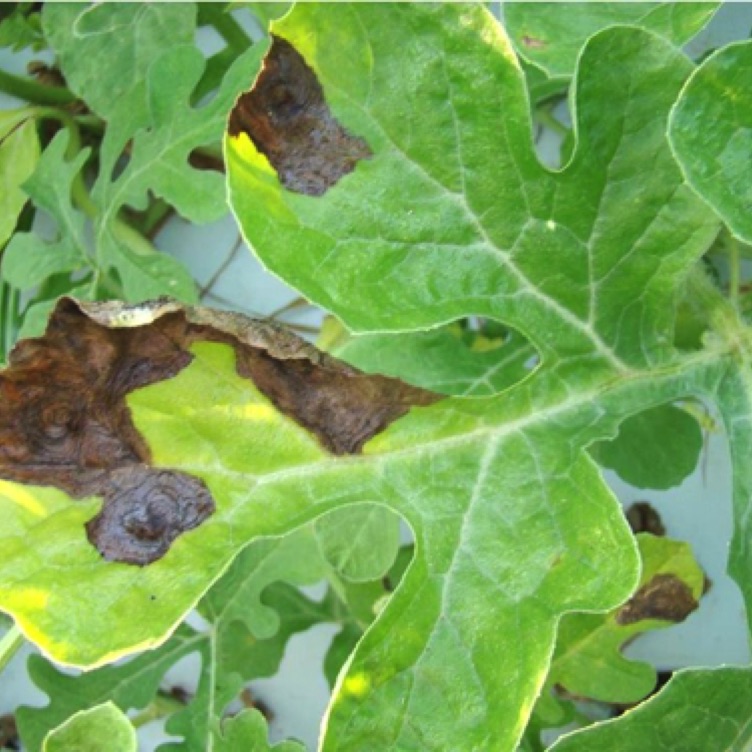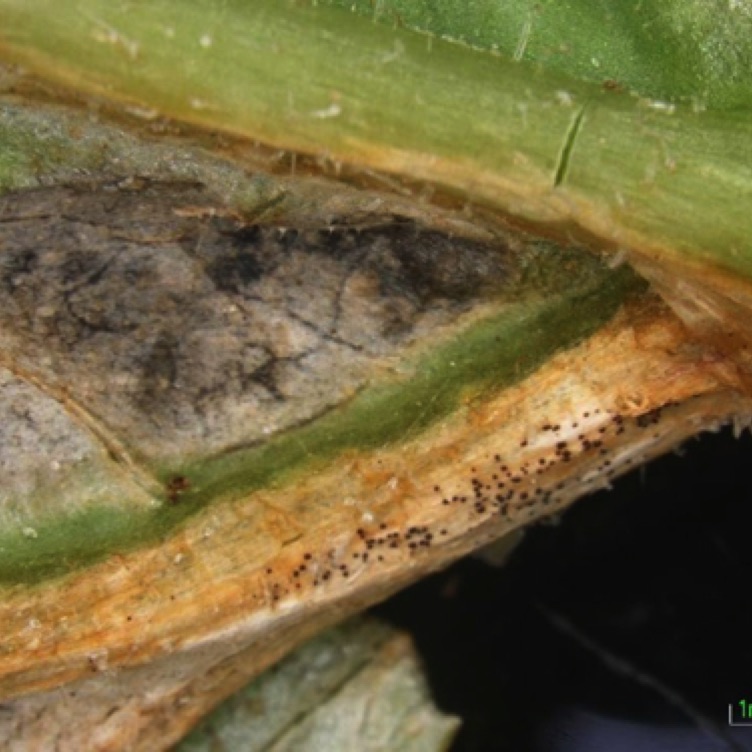Within the past two weeks, there have been multiple calls about pests affecting watermelon crops. One pest in particular is Didymella bryoniae, better known as Gummy Stem Blight (GSB) has been an issue. This fungus is a common problem in Florida and can cause significant losses, if left unchecked. When conditions are ideal, like it has been recently, this disease can become a major problem. GSB is an ascomycete fungus that can live on seeds, weeds, and previous plant debris. It will produce sexual (perithecia) and asexual (pycnidia) spores.
At this point in time, watermelons have not become fully mature, and are still susceptible to GSB. If you have noticed lesions on the stem followed by an ooze, it is likely you have GSB. Cankers will develop on the stem and eventually become red, brown, or black in color along with a red to amber colored ooze. However, do not rely on the ooze to make a correct diagnosis. Anthracnose (Colletotrichum orbiculare) and inadequate soil liming can also cause a gummy substance to exude from the stems. Look for black fruiting bodies (pycnidia, perithecia, or pseudothecia) on the leaves, stems, and fruits to confirm the diagnosis. With recent weather, fruiting bodies (pycnidia) will release more spores when the fruiting bodies get wet and are moved by wind. This process serves as the main pathway for infection. If the infections are severe, you will notice large, brown lesions on the leaves with eventual vine wilting. Watermelon fruit will rot if the vines are severely infected. The first lesions on the fruit will be oval to circular and greasy green in color. Those same lesions will become brown to black and look sunken. Newly infected watermelons will start to show symptoms within 7-12 days.
Make sure you are controlling aphids and striped cucumber beetles as well as powdery mildew, since these pests can provide entry sites for GSB. The harvest points of watermelons could also be an entry for the pathogen, which would lead to post-harvest decay.
To prevent this pest from entering your field, purchase clean, healthy seeds or transplants from reputable companies that have a good history of GSB-free seeds or plants. Closely monitor the crop through the seedling stage, as this is a common time to notice symptoms. Be sure to have a fungicide program in place. Two effective fungicides such as Chlorothalonil and Mancozeb should be included in your fungicide program. Alternate chemistries to prevent potential fungicide resistance. Currently labeled chemicals for cucurbits in Florida can be found in the Vegetable Production Handbook for Florida.
If you have GSB in your melons it is important to protect future crops. After harvest is complete, deep plow all infected plant material into the soil and rotate the field into only crops that are not GSB hosts for two to three years. Additionally, kill any volunteer watermelon plants that sprout in previously infected fields as those plants can be a source of inoculum too.
For more info, contact your local extension agent or read Management of Gummy Stem Blight on Cucurbits in Florida .
- Gummy Stem Blight Affecting Watermelons in Jackson County - May 13, 2019


